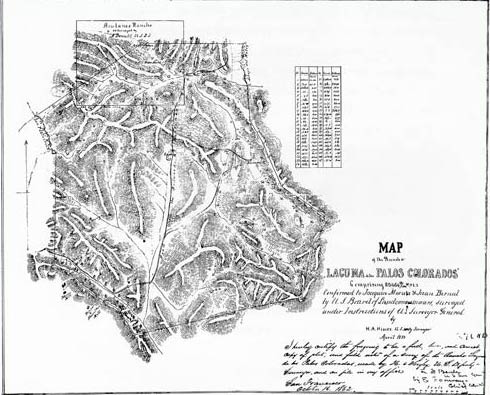The early settlement that would become Lafayette straddled the road that led from the redwoods to the lumber shipping point at Martinez rapidly becoming a stop-over spot for wagon drivers and their teams and a community center for the scattered ranches on the old Acalanes grant.
At that time the road from Moraga Valley threaded over Jonas Hill and curved into modern Golden Gate Way near Second Street. Here, an early school and a church were built. Soon roadside stores, taverns, and rooming houses appeared as a town took shape.
In 1853 Elam Brown established a grist mill on the creek at Golden Gate Way near First Street, and in the early 1860s the center of the village began to shift away from the old lumber road and move toward the present Mt. Diablo Boulevard-Moraga Road intersection.
By 1857 the settlement would have an official name, a post office, and a country life before it would become a “commuter city.”

By 1855 the lumbering traffic from the San Antonio Redwoods to the shipping point in Martinez was heavy enough to support a blacksmith shop and a couple of taverns. The Widow Bernal’s home is shown on the map, and above is the “ojo de agua” near where Brown probably built his first house. By this date the earlier water supply had failed, and Brown had established the “downtown” Lafayette area and built the home on Lafayette Creek at Hough Avenue that he was to occupy until his death.
